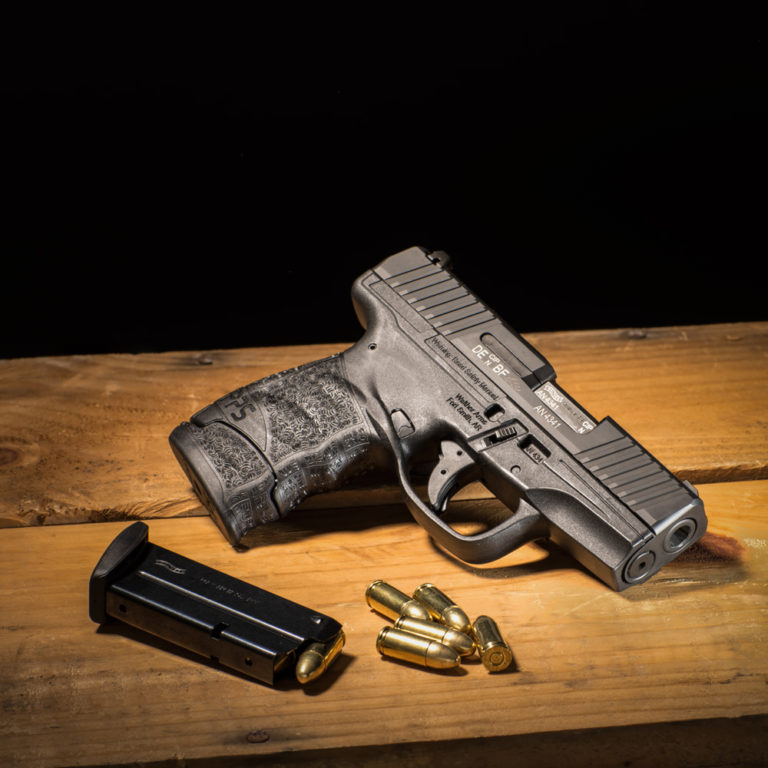
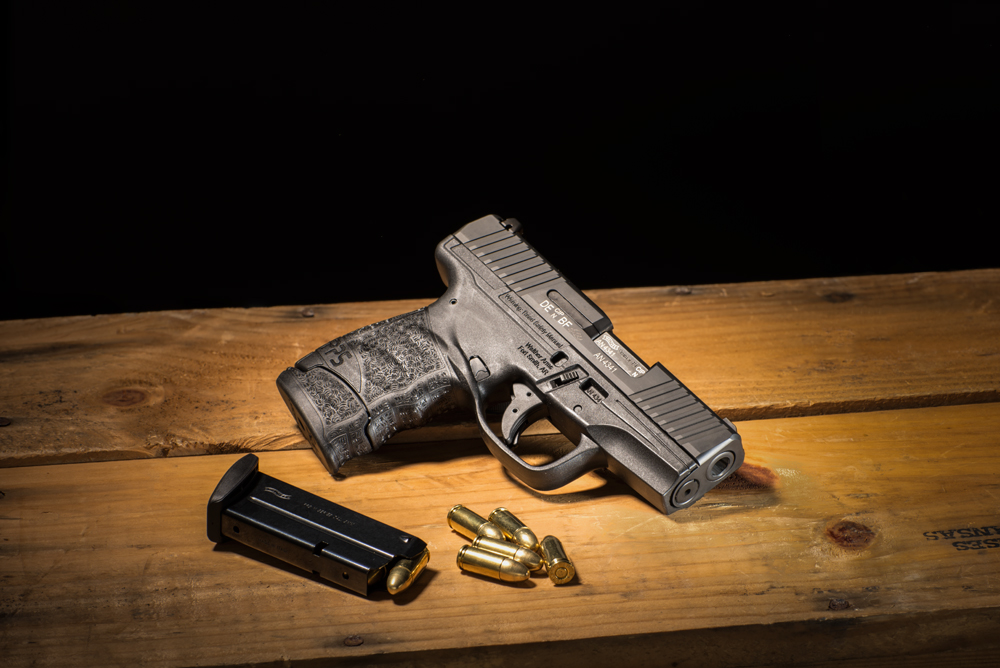 Evolution is inevitable. The way we have defended ourselves over the past 3, 10 or even 100 years has changed tremendously. Better ammunition, pistol designs and manufacturing methods have given concealed carry holders a wider range of options. Engineers at Walther are always looking for ways to produce a better pistol—more accurate, lightweight, user-friendly and affordable. In fact, the company has always been on the cutting edge of modern pistol design, and the new PPS M2 is a perfect example of Walther’s dedication to refinement in a concealed carry pistol.
Evolution is inevitable. The way we have defended ourselves over the past 3, 10 or even 100 years has changed tremendously. Better ammunition, pistol designs and manufacturing methods have given concealed carry holders a wider range of options. Engineers at Walther are always looking for ways to produce a better pistol—more accurate, lightweight, user-friendly and affordable. In fact, the company has always been on the cutting edge of modern pistol design, and the new PPS M2 is a perfect example of Walther’s dedication to refinement in a concealed carry pistol.
Some might say that the Walther PPS M2 is “new and improved.” I hate this expression because it infers that what came before was “old and lousy,” and in no way is that the case with the Walther PPS Classic. The PPS Classic is a refined, reliable and accurate personal defense or backup pistol. Thin and flat with flush-fit and extended magazine options and modular back straps that offer a custom fit for most hands, the PPS Classic proved itself to be an excellent single-stack pistol chambered in either 9mm or .40 S&W. Yes, the PPS M2 is new, but it’s not just the Classic re-skinned with aesthetic changes. This is a new pistol inside and out.
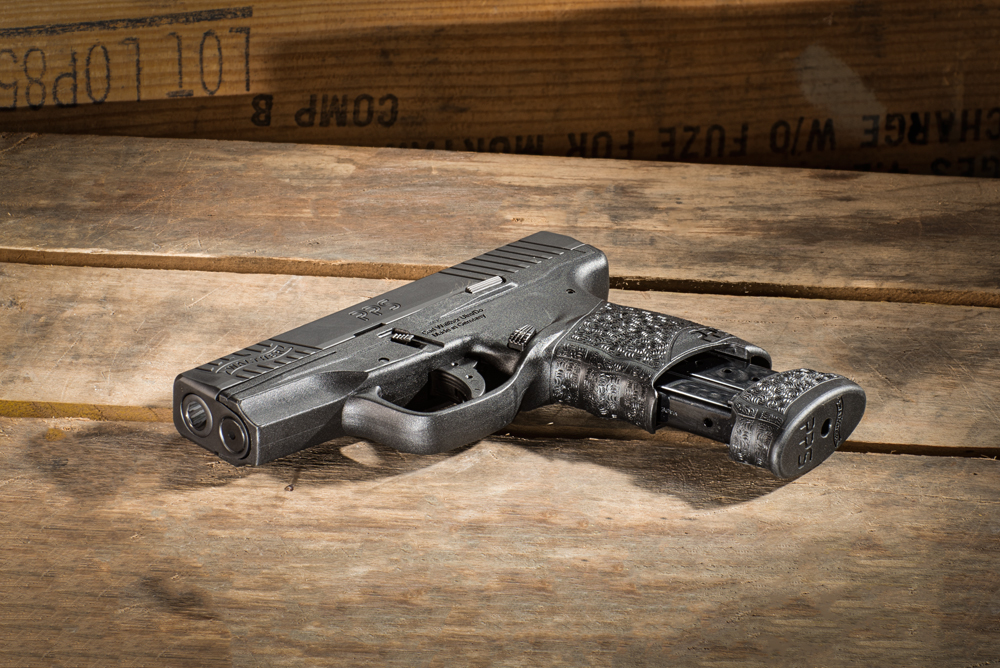 The PPS M2 incorporates the ergonomic Walther grip, similar to the style found on the PPQ, with a texture that ensures a shooter has a good purchase on the pistol. It also provides a slight palm swell and shallow finger grooves to give the pistol a big-gun feel without giving it big-gun bulk. The polymer frame features a ridge for the trigger finger and thumb of either a right- or left-handed shooter that channels them toward the trigger during the draw. The grip is smooth and comfortable with your trigger finger extended in the ready position along the frame.
The PPS M2 incorporates the ergonomic Walther grip, similar to the style found on the PPQ, with a texture that ensures a shooter has a good purchase on the pistol. It also provides a slight palm swell and shallow finger grooves to give the pistol a big-gun feel without giving it big-gun bulk. The polymer frame features a ridge for the trigger finger and thumb of either a right- or left-handed shooter that channels them toward the trigger during the draw. The grip is smooth and comfortable with your trigger finger extended in the ready position along the frame.
The polymer frame omits the modular back straps and accessory rail of the PPS Classic. I question the need for an accessory rail on sub and compact carry guns anyway. I prefer no rail as it’s less bulky and will allow for easier re-holstering. The result is a smoother nose to the PPS M2 with radiused leading edges to aid holstering.
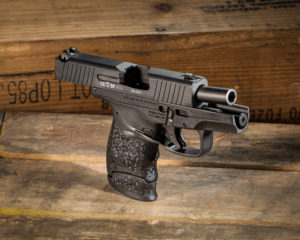 If the grip design is a new direction for the PPS series, so too is the magazine release. The M2 uses a thumb-operated magazine release. If there was a feature on the PPS Classic that some had difficulty warming to, it was the ambidextrous paddle-style magazine release built into the rear of the trigger guard. We Americans like our magazine release to be operated by our thumb, and Walther has obliged.
If the grip design is a new direction for the PPS series, so too is the magazine release. The M2 uses a thumb-operated magazine release. If there was a feature on the PPS Classic that some had difficulty warming to, it was the ambidextrous paddle-style magazine release built into the rear of the trigger guard. We Americans like our magazine release to be operated by our thumb, and Walther has obliged.
The checkered button is flush with the edge of the finger channel and easy to operate. In fact, the PPS M2 spits out empty magazines like they were a bad taste in its mouth. Fast and consistent. Something to note: The Classic and M2 variants of the PPS do not share magazines. Because the M2 uses a thumb-operated magazine release, Walther engineers were able to make an under cut at the rear of the trigger guard. This permits shooters to have a slightly higher grip on the pistol to better manage recoil and muzzle flip.
Walther also placed front and rear slide-cocking serrations on the PPS M2. Some subcompact 9mm pistol slides are notoriously difficult to manipulate due to the small size of the pistol and the weight of the recoil spring. Add an oily gun or sweaty hands to the equation and the situation is only worsened. The large, coarse serrations on the PPS M2 make this pistol very easy to operate.
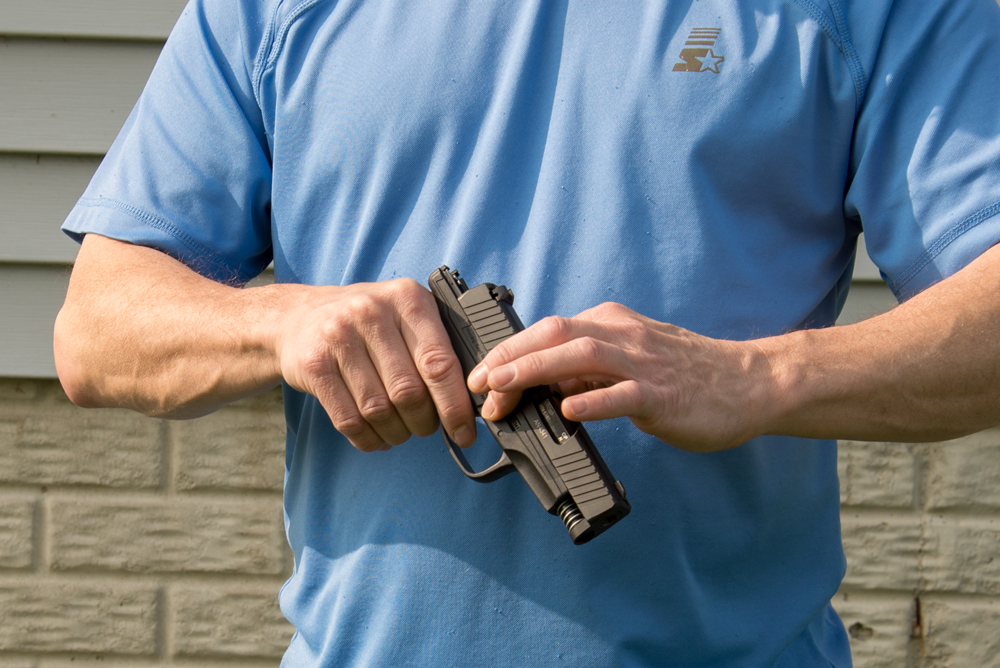 The steel fixed three-dot sights are big and bold with three large white dots. The sights can also easily be removed to upgrade to night sights or to change the front to a different height, depending on your needs. The slide rides on steel inserts in the polymer frame. On the right side of the frame, the steel guide is one piece and nearly three-quarters the length of the frame; the left is broken into two sections to accommodate the slide stop lever. That extended steel guide insert no doubt helps accuracy, as does the solid guide rod and dual recoil springs. The dual recoil springs also help mitigate felt recoil.
The steel fixed three-dot sights are big and bold with three large white dots. The sights can also easily be removed to upgrade to night sights or to change the front to a different height, depending on your needs. The slide rides on steel inserts in the polymer frame. On the right side of the frame, the steel guide is one piece and nearly three-quarters the length of the frame; the left is broken into two sections to accommodate the slide stop lever. That extended steel guide insert no doubt helps accuracy, as does the solid guide rod and dual recoil springs. The dual recoil springs also help mitigate felt recoil.
The short, 3.18-inch barrel features polygonal rifling. Compared to conventional rifled barrels of the same length using the same ammo, the PPS M2 eked out a bit more velocity. Looking at my range data, it looks like about 10 feet per second (fps) extra. Not wildly more, but an edge. A small cutout on the top side of the barrel acts as a loaded chamber viewing port.
I spoke with Everett Deger at Walther Arms about the changes to the PPS. He pointed to the trigger on the M2, which is a new design.
The PPS Classic used a modular backstrap that allowed users to change the size of the grip back straps as well as disable the pistol when the back strap was removed.
“The new PPS M2 simplifies the trigger and aids in what would be considered a tangibly feeling, smoother trigger, although it isn’t necessarily lighter than the previous PPS,” Deger said.
When I asked about the fate of the PPS Classic, Deger said the model will continue to be supported under Walther’s Lifetime Warranty; however, the model will officially be discontinued in the summer of 2016 to make way for the new M2.
 The trigger is wide and serrated on the edges, giving it the feel of a full-size pistol trigger. It is a lot like the Walther PPQ trigger, but they are different. The factory states the trigger pull of the M2 is 6.1 pounds; using my Lyman digital trigger pull gauge I averaged 5.9 pounds. The pull is smooth with a bit of take up. As you continue the trigger press, you’ll notice the cocking indicator starts to protrude from the rear of the slide. The rest of the press is clean at the trigger break. Reset is also fairly short, allowing a user to get off a faster follow-up shot if required.
The trigger is wide and serrated on the edges, giving it the feel of a full-size pistol trigger. It is a lot like the Walther PPQ trigger, but they are different. The factory states the trigger pull of the M2 is 6.1 pounds; using my Lyman digital trigger pull gauge I averaged 5.9 pounds. The pull is smooth with a bit of take up. As you continue the trigger press, you’ll notice the cocking indicator starts to protrude from the rear of the slide. The rest of the press is clean at the trigger break. Reset is also fairly short, allowing a user to get off a faster follow-up shot if required.
Magazines for the PPS M2 come in three sizes: a six-round flush-fit, a seven-round extended and an eight-round extended with finger rest. The flush-fit magazine keeps the footprint of the M2 compact and extremely manageable for concealed carry. My sample shipped with the six- and seven-round magazines. I preferred to shoot the pistol with the extended seven-round magazine because I could keep my entire, average-size hand on the grip for maximum control. Using the flush-fit six-round magazine, I needed to curl my little finger under the floor plate.
After my initial range testing, I didn’t waste any time and started carrying the PPS M2 concealed in a Blade Tech IWB Klipt Ambi holster I had on hand. The new Walther fitted the Blade Tech fine after I tweaked the retention screw. Carrying the PPS M2 in appendix carry proved to be comfortable with easy access to the pistol. I use my framed diploma as a target when doing dry-fire practice draws, and if that had been live fire, the holes would have been a seal of approval.
 Fieldstripping is simple. Pull down on the takedown lever and the slide will move forward; from there it can be removed from the frame. You don’t need particularly muscular fingers to remove the recoil spring and guide rod assembly, either.
Fieldstripping is simple. Pull down on the takedown lever and the slide will move forward; from there it can be removed from the frame. You don’t need particularly muscular fingers to remove the recoil spring and guide rod assembly, either.
I conducted accuracy testing using a rest at 15 yards. I also fired at 25 yards and 5 yards. The PPS Classic has a great reputation as a reliable pistol, so I assembled four types of 9mm ammo in a variety of bullet weights. (Note: The manual advises against using +P ammo in the M2). A .40 S&W caliber is slated for mid 2016. Winchester Defend and Train ammo is paired ammo: the Train using a 147-grain FMJ bullet and the Defend a 147-grain JHP. Both are loaded to a similar velocity so your training and defense rounds will perform similarly. I also used Aguila 115-grain FMJ bullets and Hornady American Gunner with 115-grain XTP bullets.
I could cover my first three-round group with the Aguila ammo using the flush-fit magazine with my thumb. Reloading with the fuller grip of the seven-round extended magazine allowed me to get surgical. The Aguila five-shot group at 15 yards was nearly one ragged hole. No matter what I fed the PPS M2, I was getting groups that averaged less than 2 inches. When I did my part, the PPS M2 rewarded me with stellar five-shot groups. I liked the trigger press a lot. Up close in rapid-fire drills, the M2 was easy to control. At 25 yards, my groups opened up, which I expected. Yet I found the M2 had excellent accuracy. There was not even a hint of a malfunction with the M2. It chewed up the 9mm ammo and spat it out even when I tried confusing it by firing with a limp wrist. The enlarged ejection port ensured empties were tossed aside without incident. As this excellent new gun attests, evolution is most typically a good thing in the firearms industry.
Specifications:
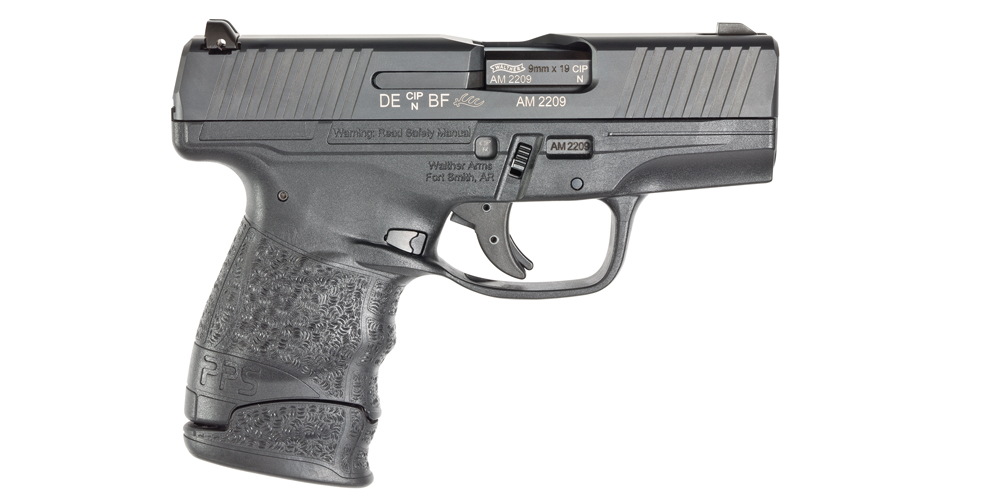 Walther PPS M2
Walther PPS M2
Caliber: 9mm Luger
Barrel: 3.18 in.
Overall Length: 6.3 in.
Weight: 21.1 oz. (empty)
Sights: Fixed, three-dot
Trigger: Striker-fired, 5.9 lbs. (as tested)
Finish: Tenifer black
Grip: Textured polymer
Capacity: 6+1, 7+1, 8+1
Price: $649
Manufacturer: Walther Arms
Editor's Note: This article is an excerpt from the special Concealed Carry issue of Gun Digest the Magazine.

Next Step: Get your FREE Printable Target Pack
Enhance your shooting precision with our 62 MOA Targets, perfect for rifles and handguns. Crafted in collaboration with Storm Tactical for accuracy and versatility.
Subscribe to the Gun Digest email newsletter and get your downloadable target pack sent straight to your inbox. Stay updated with the latest firearms info in the industry.

![Best Concealed Carry Guns In 2025 [Field Tested] Wilson Combat EDC X9S 1](https://gundigest.com/wp-content/uploads/Wilson-Combat-EDC-X9S-1-324x160.jpg)


![Best 9mm Carbine: Affordable PCCs [Tested] Ruger Carbine Shooting](https://gundigest.com/wp-content/uploads/Ruger-Carbine-Shooting-100x70.jpg)
![Best AR-15: Top Options Available Today [Field Tested] Harrington and Richardson PSA XM177E2 feature](https://gundigest.com/wp-content/uploads/Harrington-and-Richardson-PSA-XM177E2-feature-100x70.jpg)
